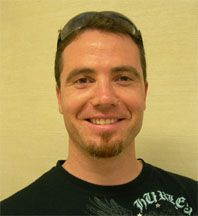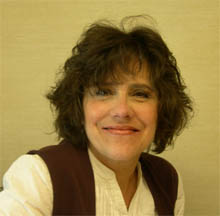Patient Statements
Distal Radius Fracture Cast Treatment

I have been practicing yoga (vinyasa) for about 3.5 years, of which the last year was a daily practice. I was in excellent health until I broke my right distal radius in a snowboarding accident on January 11. The fracture was about 1" from the distal end and not comminuted and extra articular. The doctor at the emergency clinic at the resort manipulated the fracture (realigned the bones) and put me in a temporary splint. I went to see an orthopedic the following week which put me in a cast in the Cotton-Loder position (flexion and ulnar deviation). The first two days were very challenging, experiencing some cast claustrophobia.
For the remainder of the 6 weeks it was challenging to sleep, I found laying on my back with my arm in a slightly supinated position I was able to be somewhat more comfortable and take the pressure off the tip of the cast. I used a plastic bag and an elastic headband to keep the cast dry when showering.
One learns pretty quickly to get around with one arm only. I was back to typing with 9 fingers within a day or two after the case was put on. After 6 weeks, the cast was removed, on March 25. I was surprised by how atrophied my arm was, in addition I could barely move my hand for the first two days. It was painful for the first week, tendon like pain but it was manageable without any drugs. I started physical therapy the day after the cast came off, roughly 7 weeks after the accident, my extension was measured at -14 degrees, in other words, I could not straighten out my hand in front of me, palm down.
Over the next 12 weeks I continued physical therapy, usually twice a week, working on range of motion only, the following 2 weeks we added in some very basic low impact low resistance strength training. During the first 6 - 8 weeks especially I played with my range of motion of often as possible throughout the day, assisting gently with my (healthy) left hand. During this time I have some sensitivity in my hand and wrist but nothing requiring drugs. I have normal day to day function after 6-8 weeks of therapy, barring lifting heavy things. At 14 weeks after the cast was removed I have about 85 - 90% of my original range of motion back. Now it was time to start full strength training, gradually building back to full strength over a month or two.
I attribute my remarkable range of motion recovery at 20 weeks after the accident to the following:
* good health, joint mobility & strength before the accident from yoga and active lifestyle
* good ER care and good manipulation of the fracture, it is close to normal
* effective immobilization of the fracture (although the Cotton Lodder position is debatable)
* consistent and diverse physical therapy with an understanding therapist
* frequent but gentle work on range of motion throughout the day, every day
* being an informed patient and having an awareness of your injury and the recovery process
I did not receive the information I required during my cast treatment and especially right after the cast removal. I decided to see another orthopedic surgeon, and finally I came to Dr Nelson, who took the time to answer all my questions and more.
~ P.R.

55 Year Old Woman
I had a distal radius fracture treated with a cast. I did not need surgery.
(Note: I wrote this, am waiting for the patient's writeup. - Dr. Nelson)
